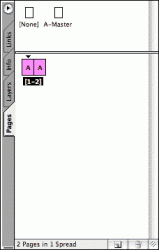I recently helped start a newspaper at school.
The school uses QuarkXPress (a Mac OS 9 version), and I use InDesign. The teacher who helps us is unaware of the existence of InDesign and assumes that it is some dumbed down software for students.
How do two compare?
Also, I have to publish the paper with a QuarkXPress template, and I was wondering if there was a convertor of some sort that will allow me to edit the Quark file, and export it to InDesign or QuarkXPress.
And, last but not least, the teacher said that the printer takes QuarkXPress in a certain format that is exported in a fashion similar to the files on a DVD. (That is, the images are in one directory, and the finished data is in another) Is it likely that pro printers will take InDesign file formats?
Thanks very much,
Matt
The school uses QuarkXPress (a Mac OS 9 version), and I use InDesign. The teacher who helps us is unaware of the existence of InDesign and assumes that it is some dumbed down software for students.
How do two compare?
Also, I have to publish the paper with a QuarkXPress template, and I was wondering if there was a convertor of some sort that will allow me to edit the Quark file, and export it to InDesign or QuarkXPress.
And, last but not least, the teacher said that the printer takes QuarkXPress in a certain format that is exported in a fashion similar to the files on a DVD. (That is, the images are in one directory, and the finished data is in another) Is it likely that pro printers will take InDesign file formats?
Thanks very much,
Matt




